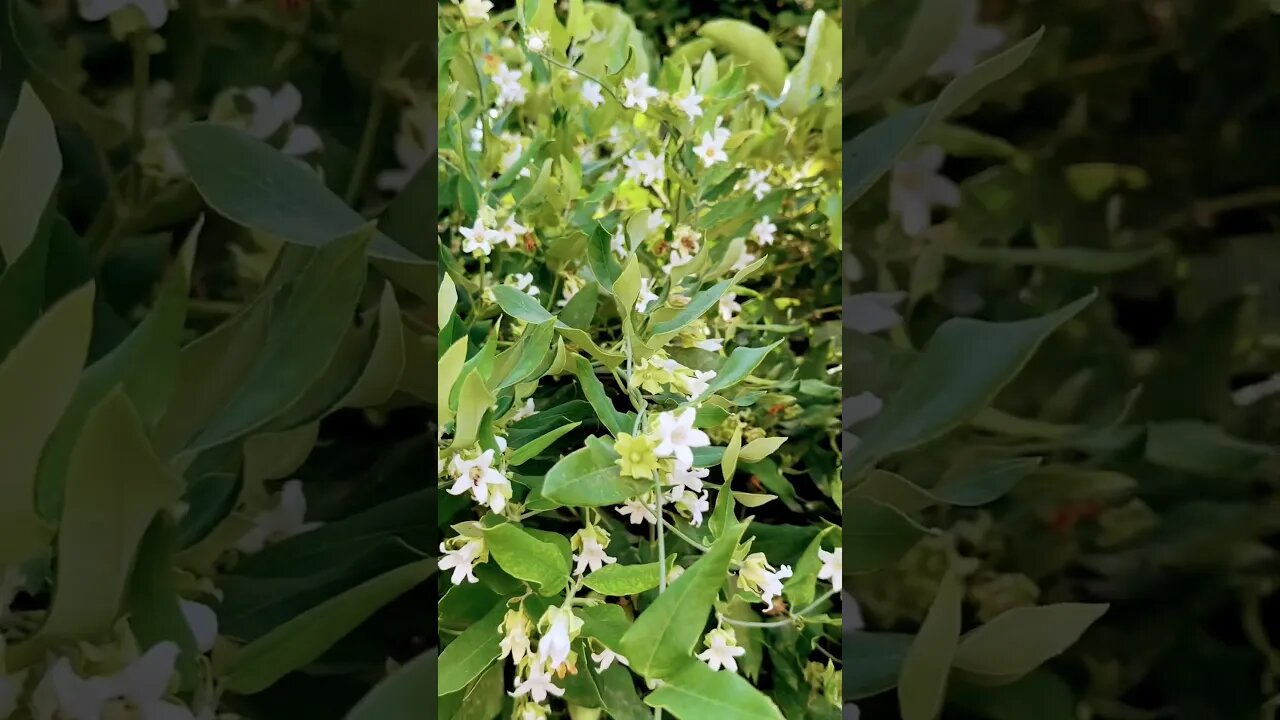Premium Only Content

Everything about the Moth Plant
Moth Plant (Araujia sericifera), also known as the White Bladderflower, Cruel Vine, or Common Moth Vine, is a perennial climbing plant native to South America, particularly in Brazil, Paraguay, Argentina, and Uruguay. It has been introduced to other parts of the world, including Australia, New Zealand, and parts of Europe, where it is considered invasive due to its ability to crowd out native species.
Characteristics
The plant is known for its fast growth and vigorous nature. Its stems can climb over other vegetation, reaching a height of up to 7 meters.
The leaves are opposite, oval-shaped, and have a green glossy appearance. The leaf edges are entire and the leaf base is cordate (heart-shaped).
The plant gets its common name from the moth-like appearance of its flowers. These are waxy white, sweetly scented, and typically bloom in the evening to attract moths for pollination. Following flowering, the plant produces large, bladder-like seed pods that contain numerous black seeds with silky tufts of hair that facilitate wind dispersal.
Impact
Despite its attractive flowers and fragrance, Moth Plant is considered a weed in many areas where it has been introduced. It can form dense infestations that smother and kill other plants, thereby reducing biodiversity. Its ability to produce a large number of seeds, combined with its robust climbing growth habit, allows it to spread quickly and over large areas. Control can be challenging due to the plant's ability to regrow from root fragments.
Control Methods
Control methods for the Moth Plant can vary depending on the specific situation. Manual control methods can include hand-pulling or digging out the plant, including as much of the root system as possible. For larger infestations, chemical control might be necessary. Always check with local regulations and guidelines when considering chemical control, as some substances might be restricted or require special permits.
In gardens, it's recommended to monitor the area for new growth and remove any seedlings immediately. It's also advisable not to plant it due to its invasive potential, even if it's not currently considered a problem in the local area.
-
 2:00:58
2:00:58
MG Show
19 hours agoFBI’s CRIMINAL RAID on Mar-a-Lago Confirmed; Rob Reiner BEHIND Russia Collusion?
20.1K14 -
 1:00:18
1:00:18
Dialogue works
2 days ago $6.68 earnedLarry C. Johnson: Russia Launches Largest Missile & Drone Attack Yet
18.1K7 -
 12:02
12:02
Actual Justice Warrior
1 day agoChicago Mayor Says ONLY Black Businesses Get Licensed
18.5K28 -
 4:21
4:21
SethDrums
4 days ago50 Cent - In Da Club if it was 1950s
18.1K3 -
 1:48:49
1:48:49
Badlands Media
16 hours agoDevolution Power Hour Ep. 416: The Rug Pull Cycle, False Signals & Narrative Discipline
376K44 -
 1:06:11
1:06:11
Inverted World Live
15 hours agoA Ghost Ship in Washington, A Fire in Roswell | Ep. 155
83.3K16 -
 3:06:55
3:06:55
TimcastIRL
11 hours agoDan Bongino To RESIGN, Trump Addresses The Nation
376K596 -
 2:14:08
2:14:08
Barry Cunningham
11 hours agoLIVE BREAKING NEWS: President Trump Addresses The Nation! And More News!
72.6K32 -
 5:15:27
5:15:27
ThatStarWarsGirl
13 hours agoTSWG LIVE: Discussing STAR WARS News with Special Guest Star Wars Theory!
58K5 -
 2:42:40
2:42:40
Laura Loomer
11 hours agoEP162: LIVE: President Trump Addresses The Nation
71.2K33